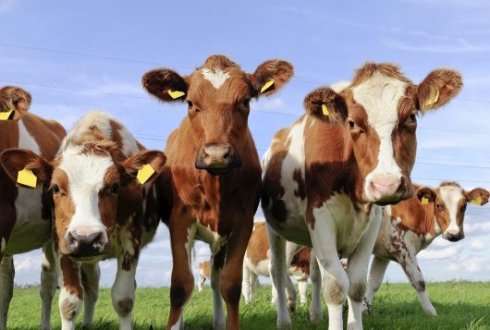Breeding value for sires for feed intake

As from today, the Dutch dairy farmers can view how feed efficient the offspring of sires are. The Netherlands is one of the first countries in the world publishing this breeding value. The increased world population requires efficient food productions, especially the production of animal proteins. This breeding value is a tool to achieve that. The publication of the breeding values is a result of research done by Wageningen UR Livestock Research in the past years.
Netherlands in the lead
The Netherlands is in the lead with regard to publishing the breeding value for feed intake. Australia published their Feed Saved breeding value in April 2015 and the Netherlands is the second country in the world publishing a breeding value for feed intake. This enables selecting on higher feed efficiency. The breeding value for feed intake shows how much more or less the offspring of sires eat for their production and maintenance. By using this breeding value for feed intake in relation to the breeding values for milk production and live weight, it is possible to breed more efficiency cows.
Of importance for dairy farmers
Dairy farmers themselves benefit from low feed intakes as feed costs are the highest variable costs on a farm. It is expected that the feed costs will only rise whereas the milk prices drop. Selecting more efficient cows helps them to lower the cost price.
The breeding value for feed intake is hard to value on its own. A higher producing cow eats more, and similar for a heavier cow. The main aim is to avoid that they will eat more than they would have to for the additional production or maintenance. The breeding value for feed intake should therefore always be judged in comparison to the breeding values for milk production, for live weight, or for body condition score. Also to avoid that we select cows that become too skinny, to short or have a low milk production.
In 2009 we ran a first pilot study using existing data to see if there was any merit in estimating a breeding value for feed intake. In the following years, more research on this was done on the Dairy Campus and through international collaborations, with financing of Productschap Zuivel. Now we can publish this unique breeding value.
Estimating breeding values—how does that work?
The Genetic evaluation sires (GES) is responsible for publishing reliable breeding values for sires in the Netherlands and Flanders. Breeding values are estimated and published for production, conformation, longevity, fertility and health traits. There is also a close collaboration with Interbull for publishing the breeding values.
Provided by Wageningen University




















